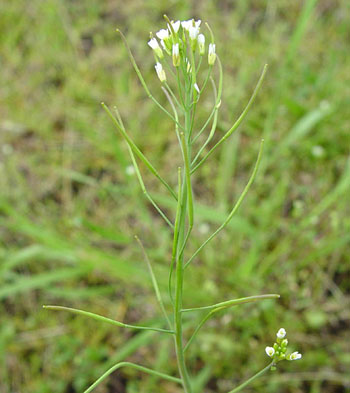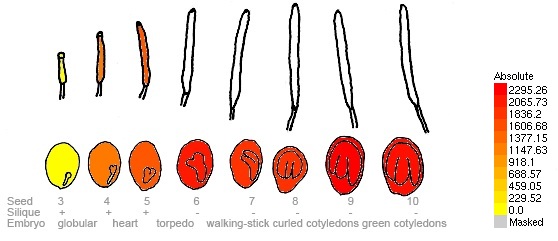Team:Bielefeld-Germany/Project/Background
From 2012.igem.org
| Line 1: | Line 1: | ||
{{Team:Bielefeld/Head}} | {{Team:Bielefeld/Head}} | ||
| + | <html> | ||
| + | <style type="text/css"> | ||
| + | |||
| + | ul { | ||
| + | list-style-image:none; | ||
| + | } | ||
| + | #bodyContent{ | ||
| + | background-color: white; | ||
| + | } | ||
| + | |||
| + | </style> | ||
| + | |||
| + | |||
| + | <!-- navigator --> | ||
| + | <div id="tab"> | ||
| + | <ul style="list-style-type:none"> | ||
| + | |||
| + | <li> | ||
| + | <a href="#1"><strong>Chemical Waste Water??!!</strong> | ||
| + | </a> | ||
| + | </li> | ||
| + | <li> | ||
| + | <a href="#2"><strong>Our Focus</strong> | ||
| + | </a> | ||
| + | |||
| + | </li> | ||
| + | <li> | ||
| + | <a href="#3"><strong>Our Partner - Laccase</strong> | ||
| + | </a> | ||
| + | </li> | ||
| + | <li> | ||
| + | <a href="#4"><strong>Laccase-donators</strong> | ||
| + | </a> | ||
| + | </li> | ||
| + | |||
| + | |||
| + | </ul> | ||
| + | |||
| + | </div> | ||
| + | |||
| + | <!-- tab panes --> | ||
| + | <div id="site"> | ||
| + | |||
| + | <div> | ||
| + | <img src="" /> | ||
| + | |||
| + | <h3>Chemical Waste Water??!!</h3> | ||
| + | |||
| + | <p class="more"> | ||
| + | |||
| + | </p> | ||
| + | |||
| + | <p> | ||
| + | coming soon. <a href="">read more</a> | ||
| + | </p> | ||
| + | </div> | ||
| + | |||
| + | <div> | ||
| + | |||
| + | <img src="" /> | ||
| + | |||
| + | <h3>Our Focus</h3> | ||
| + | |||
| + | <p class="more"> | ||
| + | |||
| + | </p> | ||
| + | |||
| + | <p> | ||
| + | coming soon <a href="">read more</a> | ||
| + | </p> | ||
| + | |||
| + | </div> | ||
| + | |||
| + | <div> | ||
| + | |||
| + | <img src="" /> | ||
| + | |||
| + | <h3>Our Partner - Laccase</h3> | ||
| + | |||
| + | <p class="more"> | ||
| + | |||
| + | </p> | ||
| + | |||
| + | <p> | ||
| + | coming soon <a href="">read more</a> | ||
| + | </p> | ||
| + | |||
| + | </div> | ||
| + | |||
| + | <div> | ||
| + | |||
| + | <img src="" /> | ||
| + | |||
| + | <h3>Laccase-donators</h3> | ||
| + | |||
| + | <p class="more"> | ||
| + | |||
| + | </p> | ||
| + | |||
| + | <p> | ||
| + | coming soon <a href="">read more</a> | ||
| + | </p> | ||
| + | |||
| + | </div> | ||
| + | |||
| + | |||
| + | </div> | ||
| + | |||
| + | |||
| + | |||
| + | <script> | ||
| + | $(function() { | ||
| + | |||
| + | |||
| + | $("#tab ul").tabs("#site > div", {effect: 'fade', fadeOutSpeed: 400}); | ||
| + | }); | ||
| + | </script> | ||
| + | |||
| + | </html> | ||
| + | |||
| + | |||
| + | |||
| + | |||
| + | |||
| + | |||
| + | |||
| + | |||
| + | |||
| + | |||
| + | |||
| + | |||
| + | |||
| + | |||
| + | |||
| + | |||
| + | |||
<center> | <center> | ||
Revision as of 08:45, 16 September 2012
Contents |
Chemical waste in water or water in chemical waste?
This page will soon report about annoying substrates in our water that we would like to deal with during our project.
Our Focus
As soon as possible we are going to present the chemicals which we want to degrade on this site. Don't miss it.
May we introduce our dear partner: Laccase
In the last few years a lot attention has been drawn to Laccases due to their ability to oxidise both phenolic and nonphenolic lignin related compounds as well as highly recalcitrant environmental pollutants. This makes them very useful for applications concernig several biotechnological processes. This includes the detoxification of industrial effluents, for example the paper and pulp, textile and petrochemical industries, the useage as a tool for medical diagnostics and as a bioremediation agent to clean up herbicides, pesticides and certain explosives in soil.Laccases are also used as catalysts for the manufacture of anti-cancer drugs and even as ingredients in cosmetics[1] In our project Laccases are used as cleaning agents for a water purification systems. Their capacity to remove xenobiotic substances and produce polymeric products makes them a useful tool for bioremediation purposes."
Laccases are copper-containing polyphenol oxidase enzymes (EC 1.10.3.2) that are found in many plants, insects, microorganisms and mainly in fungi. These enzymes are used in different metabolic pathways and fulfill several functions. E.g. these Enzymes are necessary on the one hand to degrade Lignin in Basidiomycetes and on the other hand to synthesize complex polymers like Melanin in Ascomycentes.In General, laccases are extracellular enzyms and consists usually of 15-20 % carbon-hydrogen. The molecular weight of the deglycated protein is 60 to 80 kDa (about 480-650 aminoacids). These enzymes can occur as monomers, dimers, trimers and tetramers. The first crystal structure of a laccase from the organism Trametes versicolorwas published in 2002.
Laccases are able to oxidize a broad range of substrates due to the contained copper-cluster, by reducing oxygen to water. The active site of the enzym includes a four-copper-ion-cluster, which can be differed by spectroscopically analyses. This Cluster consists of one blue copper-ion (type 1), one type 2 copper ions and two type 3 copper-ions. Because of the blue copper-ion, the laccases belongs to the big family of the blue copper proteins. This specific blue copper ion is essential for the radical oxidation of the phenolic group. In the enzyme-reaction the electron from the oxidation is transferred to the other three copper ions. These ions are forming a trinuclearic cluster, which transfers electrons to the terminal electron acceptor oxygen. The molecular oxygen is reduced by four electrons to water.
[1] Susana Rodríguez Couto & José Luis Toca Herrera;Industrial and biotechnological applications of laccases: A review; 2006; Biotechnology Advances 24 500–513
Let´s give it up for our Laccase-donators
Arabidopsis thaliana

Arabidopsis thaliana (A. thaliana), or commonly known as thale cress, is a small flowering plant which has been established as a model organism. We have chosen this little plant as a representative for higher eukaryotes and not only because there is a lot of research going on at Bielefeld University with this tiny little weed. A thaliana has a small genome with 125 Mb total and was sequenced completely in the year 2000. Besides the good annotation of genes there is also a large number of mutant lines available. The research on A. thaliana is progressing fast and researchers from all around the world are working with this model organism because of its rapid life cycle of 6 weeks and its easy cultivation even at restricted places, just to name a few examples. The Arabidopsis community is therefore huge and progress in understanding the cellular and molecular biology of this flowering plant is documented well and available.
For our project we were interested in the laccase(s) of Arabidopsis. We did some research at TAIR and found 22 laccases or laccase-like genes. Stunned by the amount of laccase genes we decided to concentrate on just one which does not encode a laccase-like protein. We have chosen gene AT5G48100.1 and investigated further. Our next stop was at the eFP Browser to see where our chosen laccase is expressed. We found out, that it is expressed in the seeds and therefore available in the siliques, as you can see in here:
With this bioinformatic research and the following laboratory work we try to get in contact with a laccase from a higher eukaryote.
References
The Arabidopsis Information Resource (TAIR), www.arabidopsis.org/aboutarabidopsis.html, on www.arabidopsis.org, Oct 24, 2000 Winter et al. (2007). Arabidopsis eFP Browser at bar.utoronto.ca. PLosOne 2(8): e718.
| 55px | | | | | | | | | | |
 "
"







